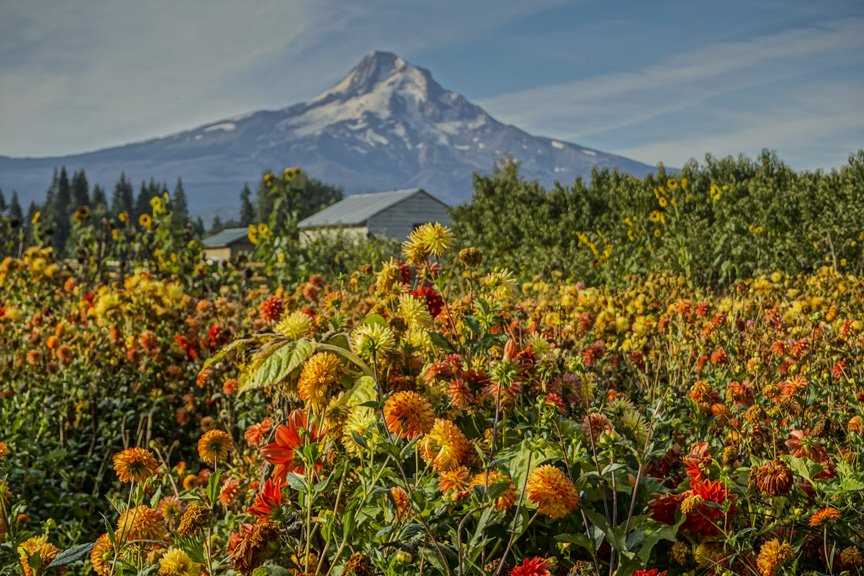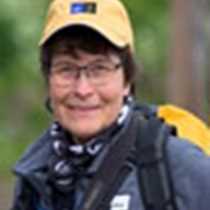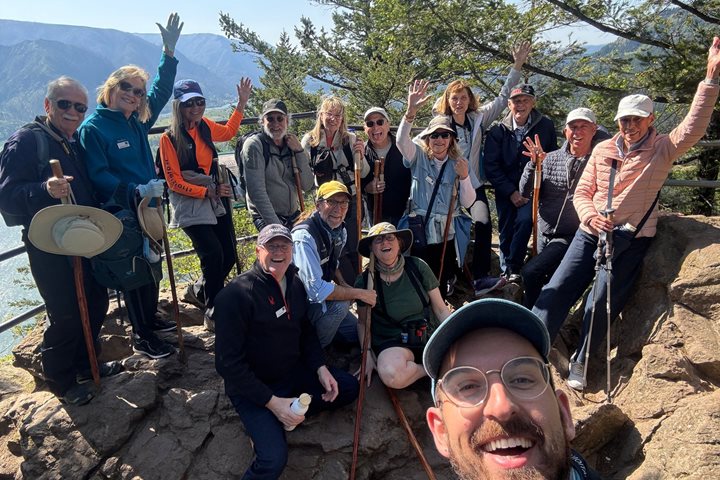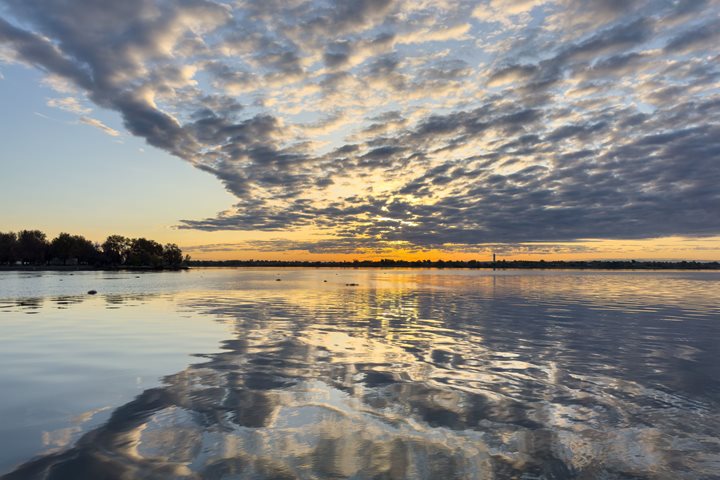At Hood River this morning the slimmest of crescent moons rose in the east on this clear and mild early autumn day. The summit of Mount Hood, the great stratovolcano and the highest point in Oregon, was seen to the south. We were ready for a full day of adventures. Right after breakfast we headed out on the motor coaches. Some of us stopped at the WAAAM (Western Antique Automobile and Airplane Museum) where you can find a superb collection of motor vehicles and airplanes from the early 20th century. These planes can fly, the cars can drive, and engines can roar; they are all beautifully restored and in working condition. There are about two acres of displays so one can get a nice walk along with an eyeful of antiques.
The trip to the Draper Girls’ Farm took us through rolling hills by orchards, vineyards, and a pasture with alpacas. The farm was delightful with playful pygmy goats, a swing suspended between two large trees, and a large field of colorful flowers. Over the flowers was a commanding view of Mount Hood and lots of photo ops with our photo instructor, Rich. We also enjoyed samples of pears, apples, and the Draper Girls’ special cider. It was an informative and restful respite.
Downtown Hood River was a special place to see for those of us who went to town. Hood River is recognized as one of the coolest river towns in America. Because of the strong and consistent winds, it has also become a mecca for surf-boarders and kite-boarders. As we sailed away from Hood River in a strong headwind, we saw many of them with their brightly colored kites and sails shining in the sun as they skimmed over the water.
The voyage downriver to Cascade Locks took us into the heart of the Columbia Gorge with great cliffs of layered basalt flows on either side. Here, we noticed a marked difference in the vegetation with dark forests of evergreens on the mountains—quite a change from the desert-like landscapes to the east. We enjoy lunch en route to dock at Cascade Locks where we met our motor coaches again for the drive to magnificent Multnomah Falls. Multnomah Falls plunges in a somewhat windblown white stream 620 feet over a ledge of basalt and into its dark green plunge pool. From there it runs in a stream under the Benson Bridge and drops to a second pool before flowing away to the river. Now Douglas firs and big leaf maple dominate the forest. Some of us hiked up the steep switchback trail toward the top of the falls, but we did not have time to go all the way.
Back on the National Geographic Sea Bird we gathered on the bow as we entered the lock at Bonneville Dam. Here, our expedition leader, Marylou, led us in singing Woody Guthrie’s Roll On Columbia Roll On. We were in full voice and the sound echoed wonderfully in the lock.
After exiting the lock we sailed past 850-foot high Beacon Rock, named by Lewis and Clark. This great tower of olivine-basalt was the core of a former cinder-cone volcano. The Ice Age floods stripped the volcano down to its core, leaving only what Clark described in his journal on October 31, 1805, as “a remarkable high detached rock that stands in a bottom on the stard side.” This is where Lewis and Clark first noticed the effect of the tide. Soon after passing Beacon Rock we saw on our “stard side” (starboard side) mule deer and a herd of 16 elk grazing not far from the river. There were also a surprising number of great blue herons and their cousins, the beautifully white, great egrets along the river shore. Then the sun sank in the west setting the clouds aflame and reflecting in gorgeous pastels on the calm water.
Following dinner Grace, our geologist/naturalist gave a lively presentation on Birds of the Columbia River Basin.









